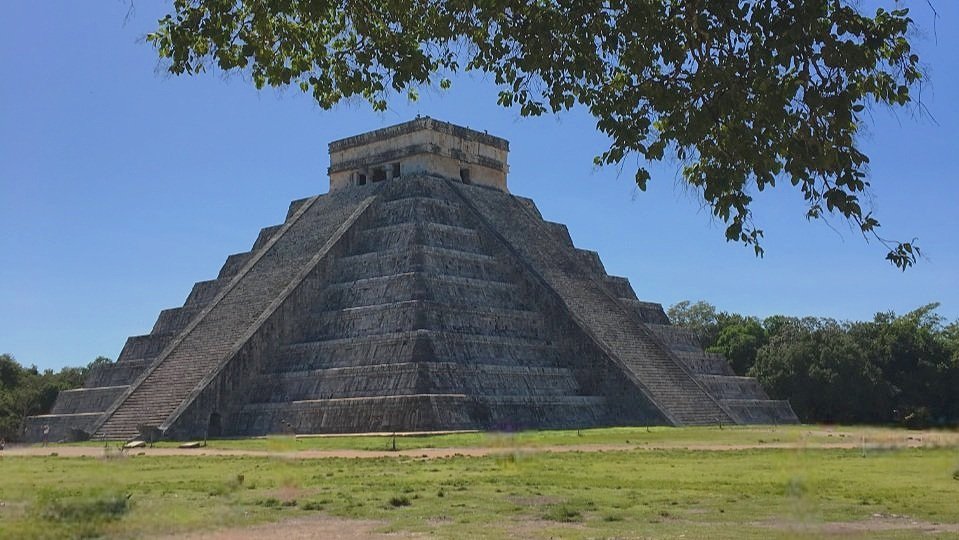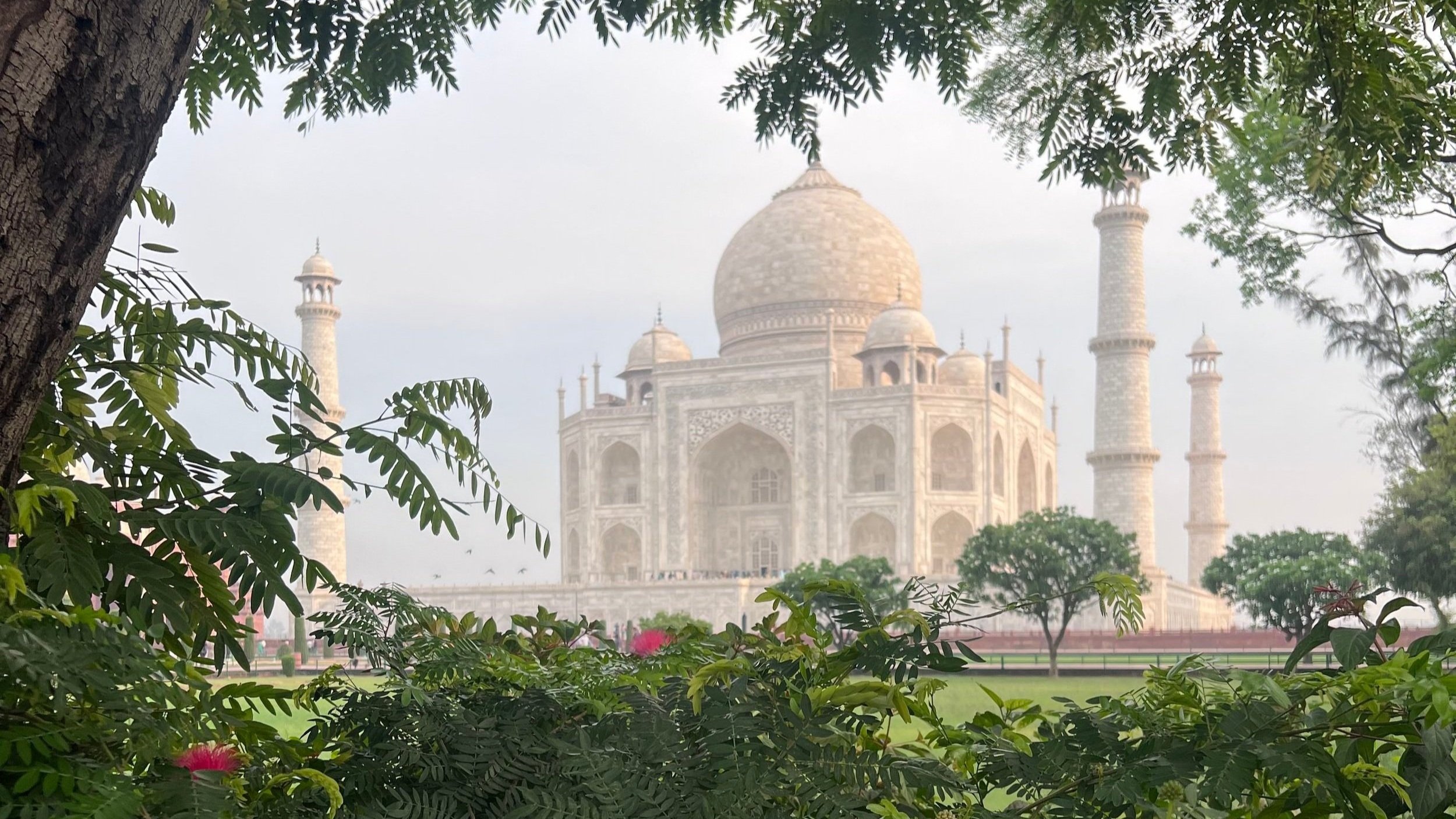Ranking The 7 Wonders Of The World
For the many faults of human beings, our history is undoubtedly filled with extraordinary achievements in engineering, architecture, and artistry. The Ancient Greeks, ever the connoisseurs of the spectacular, began to take notice of these achievements during their travels and created a list to recognize these monumental feats of creation. A list of marvels that we know today as The 7 Wonders Of The Ancient World. These sites, and their modern-day locations, included the Great Pyramid of Giza in Egypt, the Hanging Gardens of Babylon in Iraq, the Statue of Zeus at Olympia in Greece, the Temple of Artemis at Ephesus in Turkey, the Mausoleum at Halicarnassus in Turkey, The Colossus of Rhodes statue in Greece and the Lighthouse of Alexandria in Egypt. Since the creation of this list sometime around the 2nd century B.C., almost all of these pillars of human achievement have been lost to the sands of time. Only one remains today: The Great Pyramid of Giza.
Since the original Wonders Of The World were created, and many since destroyed, civilizations worldwide have continued to create breathtaking structures and stunning monuments that highlight humanity’s quest for greatness. With the original 7 Wonders Of The World all but gone, an idea was born to create an updated version of the list. Hundreds of countries worldwide submitted their greatest achievements in ingenuity and design, and in 2007, the official list of The 7 New Wonders Of The World was born. The list included the Colosseum in Italy, the Great Wall Of China, Machu Picchu in Peru, Chichén Itzá In Mexico, Christ The Redeemer in Brazil, Petra in Jordan, and the Taj Mahal in India.
I’ve been lucky enough to lay my eyes on all seven of the New Wonders Of The World during my travels over the years, and I’ve decided to rank them based on my experiences. Here it goes:
7.) Christ the Redeemer (Rio De Janeiro, Brazil)
Christ the Redeemer is arguably the most iconic statue in the world, majestically positioned atop Brazil’s Corcovado Mountain where it looms over the vibrant, bustling city of Rio de Janeiro. After a long night of overindulgence at one of the city's many block parties, watching the sun rise over this towering figure can feel like some sort of cosmic message. As if Jesus himself is watching over you in disapproval of how many Caprinhas you've consumed in the last 8 hours. While it's undoubtedly eye-catching and is the centerpiece of one of the best cities in South America, when it comes down to it, it's just a concrete statue. An impressive concrete statue, but a concrete statue nonetheless. It's hard to view it with the same reverence as the other entries on this list. It's a stunning site, but it lacks the architectural ingenuity and historical significance that make the other entries on this list so remarkable. Places like Angkor Wat in Cambodia, The Alhambra in Spain, and Old Bagan in Myanmar are just a few places that didn't make the list that have been around longer and are more impressive, than Christ The Redeemer. It's worth seeing, and Rio De Janeiro is a must-visit on any South American itinerary, but it's not even close to one of the seven most spectacular man-made sights on Earth. Sorry, Jesus, I hope you're not mad at me.
6.) Chichén Itzá (Yucatan, Mexico)
Putting Chichén Itzá on the list was, in my opinion, another misstep. Chichén Itzá is an impressive site tucked away deep in Mexico's breathtaking Yucatan Peninsula. Its main attraction, the El Castillo step pyramid, is undeniably impressive and packed with historical significance. However, it doesn't belong on the list because there's another archeological site in Mexico that should have gotten the glory instead. While Chichén Itzá is impressive in its own right, Teotihuacán is the true crown jewel of Mexico. Constructed over 500 years prior to the erection of Chichén Itzá, Teotihuacán was one of the largest and most influential cities in all of Mesoamerica. It’s an ancient metropolis that informed a lot of modern-day urban design. The complex itself is a stunning sprawl of architecture and history. Seeing the Pyramid of the Sun with the Mexican hillside as its backdrop is mesmerizing. It’s older, more historically significant and its grounds are significantly larger than those of Chichén Itzá. Visiting the historical capital city of Teotihuacán is a great reason to make a journey to Mexico. Honestly, I think both spots are worth a trip and Mexico, as a whole, is a great place to go for a variety of other reasons. The food, the music, the art. The fact that you can drink tequila on the beach at 9 in the morning without any judgment being passed. However, if I was headed to Mexico and had to choose just one site to visit, it would be Teotihuacán. While both locations deserve recognition, if there is only one Wonder of the World in Mexico, it’s Teotihuacán.
5.) The Great Wall Of China (Huairou District, China)
The Great Wall Of China is exactly as advertised: a great big wall. While that description may not entice you to pack your bags and travel to China, trust me, it's worth the trip. The legends of its grandeur have echoed through history since its construction over 2,000 years ago and in person, it’s an absolute marvel. The wall weaves through the peaks and valleys of the mist-shrouded landscape, like a stone serpent slithering through the mountains. The history of the wall, and of China itself, can be felt in every step you take on its surface. Its vastness is almost incomprehensible, as the wall seemingly goes on forever before fading away in the distance. While it once served as a military bastion, the wall now stands tall as a symbol of China’s innovation and stability throughout the centuries.
4.) Machu Picchu (Cusco Region, Peru)
Before being conquered by the Spanish in the 1500’s, the Inca people were one of the most successful civilizations in human history. Their achievements in agriculture, art, and architecture are still impacting modern society to this very day. Machu Picchu is a striking example of what the Inca people were able to achieve during their impressive run. Perched high in the Andes Mountains overlooking the Urubamba River Valley, Machu Picchu is a combination of engineering achievement, sophisticated stonework, and the Inca people’s reverence for nature and spirituality. Although its distance from the modern-day cities of Peru makes it the most difficult site on this list to reach, those who embark on the journey are rewarded with levels of isolation that make a trip to Machu Picchu feel like a spiritual journey. Multi-day treks to Machu Picchu such as the Inca Trail or Salkantay Trek are a great way to get a feel for the region and get in touch with the natural side of Peru on your way to this amazing World Wonder.
3.) The Colosseum (Rome, Italy)
Arguably the most famous of the 7 New Wonders, the Colosseum not only lives up to the hype, but surpasses expectations. The storied history of the stadium creates a magical atmosphere when you enter, transporting you back to Ancient Rome and into one of the 50,000 seats that made up the Colosseum in its prime. The stadium's electricity can still be felt as if the crowd's anticipation of the arrival of the mighty gladiators has been frozen in time. The structure itself is awe-inspiring and the fact that it was built 2 millennia ago is nothing short of mind-boggling. The surrounding area of Rome adds to the Colosseum's intrigue as the city itself acts almost as an open air museum, with reminders of the its illustrious past littered throughout. The Colosseum, however, is undoubtedly the pinnacle of ancient Rome’s architectural prowess and is worth a trip of any distance to see.
2.) The Taj Mahal (Agra, India)
The Taj Mahal is single-handedly the most breathtakingly beautiful piece of architecture I have seen in my lifetime. A captivating symphony of Persian, Indian and Islamic influences, the Taj Mahal puts you in a trance the instant you find yourself in its presence. Its perfectly symmetrical, white marble facades almost seem like they would be impossible to create even in the present-day with modern technology, yet the Taj was created nearly 400 years ago. In the early morning and late afternoon, the sun reflects off the marble in a way that almost makes the mausoleum appear like a vision in the distance. No amount of descriptive writing can convey the feeling of walking through the red sandstone gates at the entrance of the complex and seeing the Taj Mahal for the first time. It’s something that needs to be experienced. Something that needs to be felt. India can be an extremely challenging and overwhelming place to travel, but seeing the Taj Mahal in person is worth overcoming those obstacles.
1.) Petra (Madi Musa, Jordan)
There is a time machine that exists and it can be found in the rugged desert landscapes of Jordan, 3 hours south of the country’s capital city of Amman: the ancient city of Petra. Founded over 2,000 years ago as a capital city and center for trade for the people of the region, it remains one of the most spectacular displays of architecture the world has ever seen. Exploring its grounds feels like taking a step into the distant past. Nearly 100 square miles in size, Petra is a city entirely carved into the rose-colored sandstone cliffs of the Wadi Musa desert. While the remarkable Treasury building that stands in front of the entrance to Petra gets most of the attention of tourists, it is just one of the hundreds of carved structures that make up Jordan's oldest city. The canyon itself is filled with life as the Nomadic Bedouin people of the region can be seen selling goods to tourists, transporting livestock like donkeys and camels, and even living in structures sprinkled throughout the cliffside. Petra feels like a portal to an ancient world. Its masterful construction and immense scale make it, in my view, our Magnum Opus.






